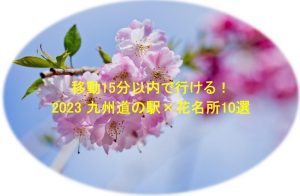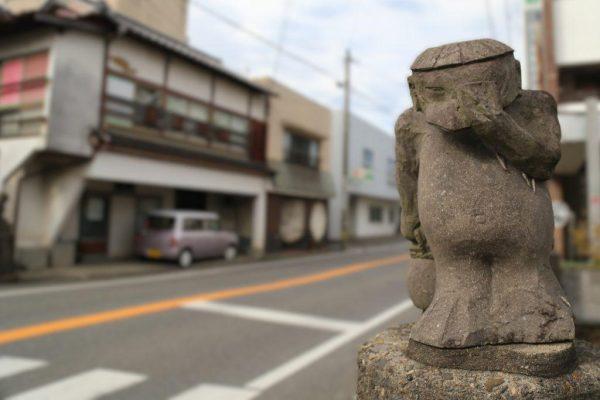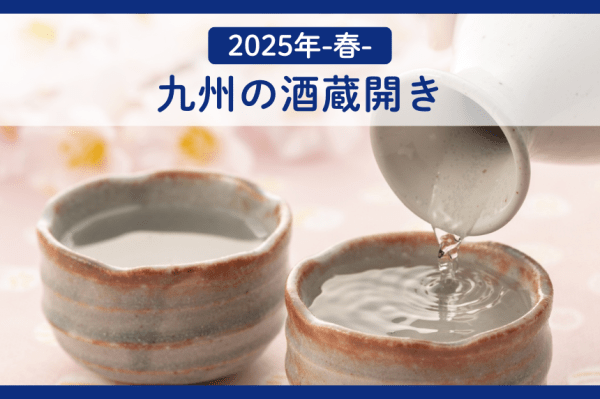2022 21 Autumn Foliage Spots Quickly Accessible from Roadside Stations in Kyushu (Part 2)
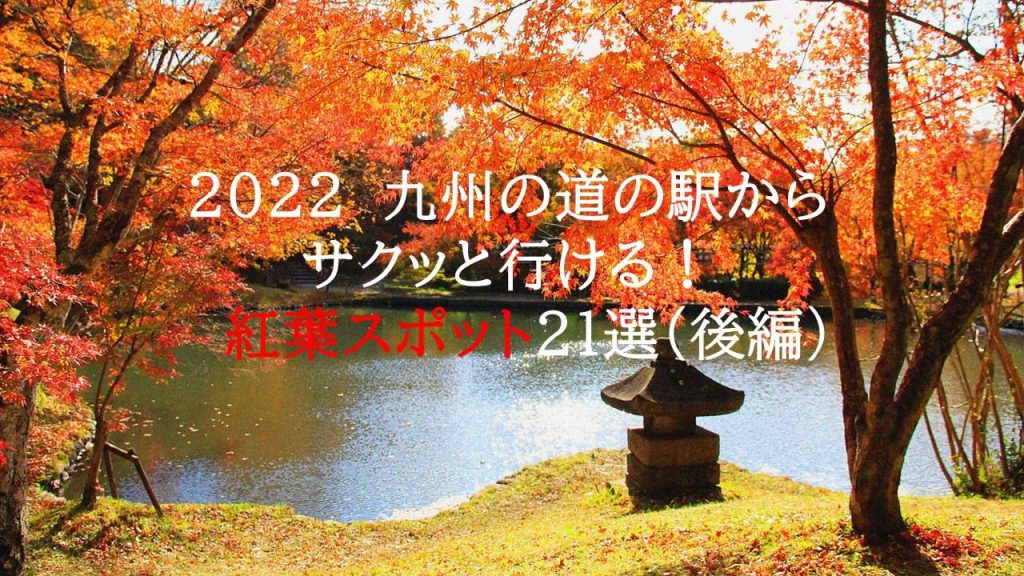
2022 21 autumn foliage spots that can be reached quickly from a roadside station in Kyushu,.
Part 2 = Kumamoto, Oita, Miyazaki and Kagoshima Prefectures
It is finally the season of autumn leaves. It's time to take a trip to enjoy the beautiful autumn leaves. Let us introduce you to some autumn foliage spots that you can stop by on your way to and from the roadside station. From classic spots to hidden gems, we will show you 10 places in Kumamoto, Oita, Miyazaki, and Kagoshima prefectures that can be reached from the roadside station in the second part of this report!
Roadside Station Toyo
⑫Tatekami Gorge
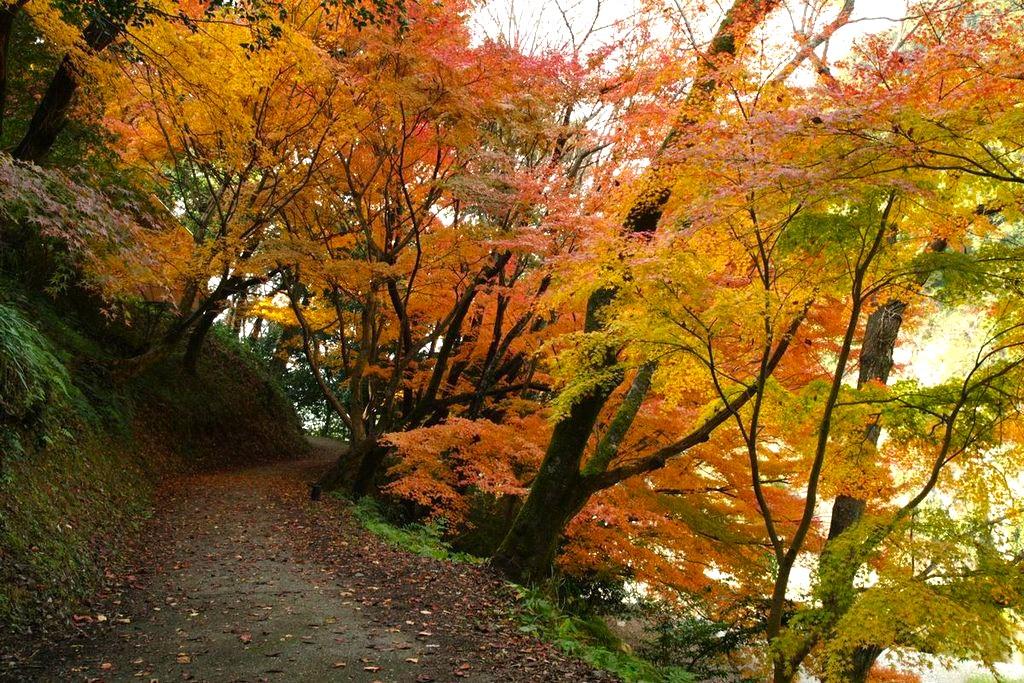
It is located in Hikawa Town adjacent to Toyo Town, just before Michi no Eki Toyo from National Route 3. A nationally designated scenic beauty, also known as "Higo no Kukataki," a large rock wall 75 meters high and 250 meters wide, provides a breathtaking view along the Hikawa River. It was formed by the erosion of Paleozoic limestone by the Hikawa River. In autumn, the area offers a spectacular view of the changing leaves. Tategamikyo Satochi Park has been established and includes a campground, a walking trail, and "Satochi Yashiki," a lodging facility modeled after a farmhouse in the 1950s. The maple trees are located along the promenade, and visitors can enjoy the autumn scenery along with the view of the large rocks on the precipitous cliffs. If you are not afraid of heights, cross the suspension bridges "Hinokuni Bridge" and "Ryujin Bridge" to view the large rock walls.
| Location | 648-4 Tategami, Hikawa-cho, Yatsushiro-gun, Kumamoto |
|---|---|
| phone | 0965-62-1543(Tategamikyo Satoyama Park Management Office) |
| Access | 3 minutes from |
| supplementary information | Related URL:. Roadside Station Toyo |
Roadside Station Aso
Ruins of ⑬Tateishi Ochaya and ⑭Hayataka Tenmangu Shrine
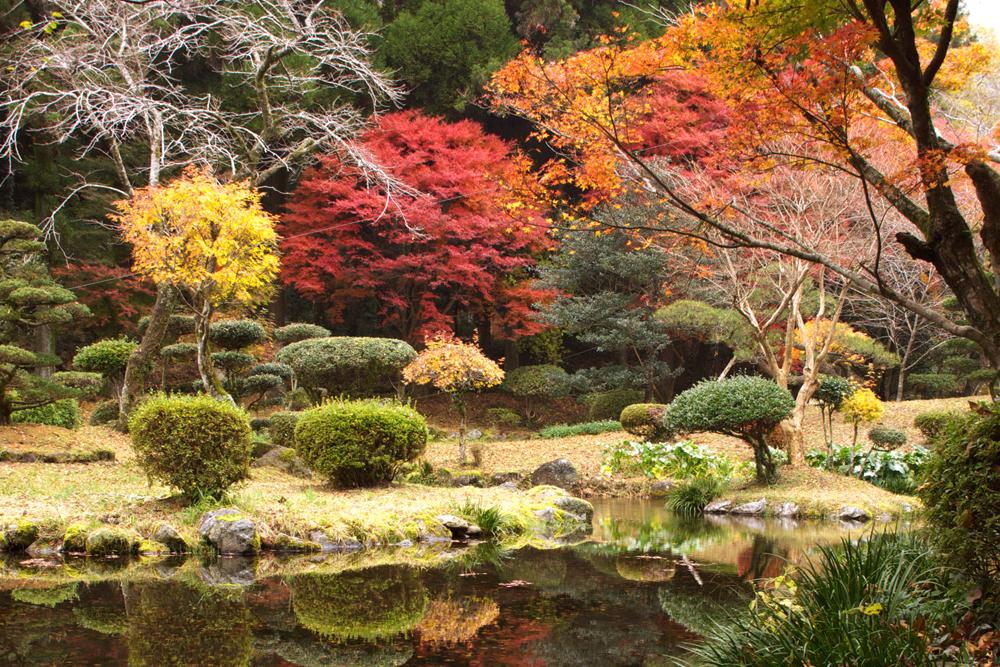
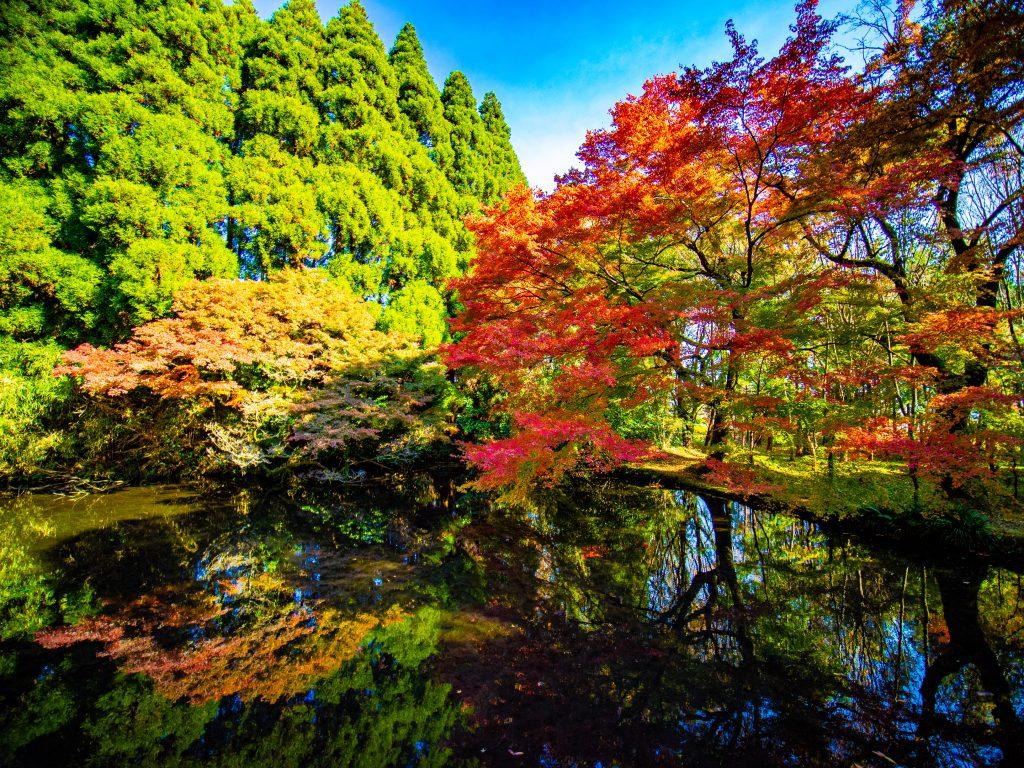
The "Mato-ishi Ochaya (teahouse) Ruins," located along the old Bungo Highway in the Ogashi district, is the site of a residence and garden where the Hosokawa clan's traveling party took a rest for lunch after leaving Kumamoto Castle during the Edo period. The garden is famous for its fountain that draws water from the northern outer rim of the mountain, and is designated as a cultural asset by the city. The fountain is a city-designated cultural asset and has been selected as one of the 100 best fountains in the prefecture. It is a favorite spot for viewing the autumn foliage among locals. The stone pavement of Bungo Kaido, built in the Edo period (1603-1867), also invites visitors to enjoy the autumn foliage.
On the other hand, the autumn leaves by the approach to the Hayataka Tenmangu Shrine adjacent to the "Matoseki Ochaya Site" are also beautiful. The shrine was built by Tsunatoshi Hosokawa, feudal lord of the Higo domain, and there is a legend that a white hawk perched on a ship's post and saved a boat from rough seas on its way to the shrine. The ema (votive tablet) in the main shrine was dedicated by Lord Hosokawa Nobunori in 1716, and the crane plaque was dedicated by Lord Hosokawa Saigo in 1842.
| name | Matoseki Ochaya Ruins and Hayataka Tenmangu Shrine |
|---|---|
| Location | 536 Mato-ishi, Aso City, Kumamoto Prefecture, Japan (Ruins of Mato-ishi Tea House) |
| phone | 0967-34-1600(Aso Information Center) |
| Access | 16 minutes from |
| supplementary information | Related URL:. Roadside Station Aso |
Roadside Station Yabatopia
(15) Goryo Autumn Leaves (Momiji) at Goryo Shrine
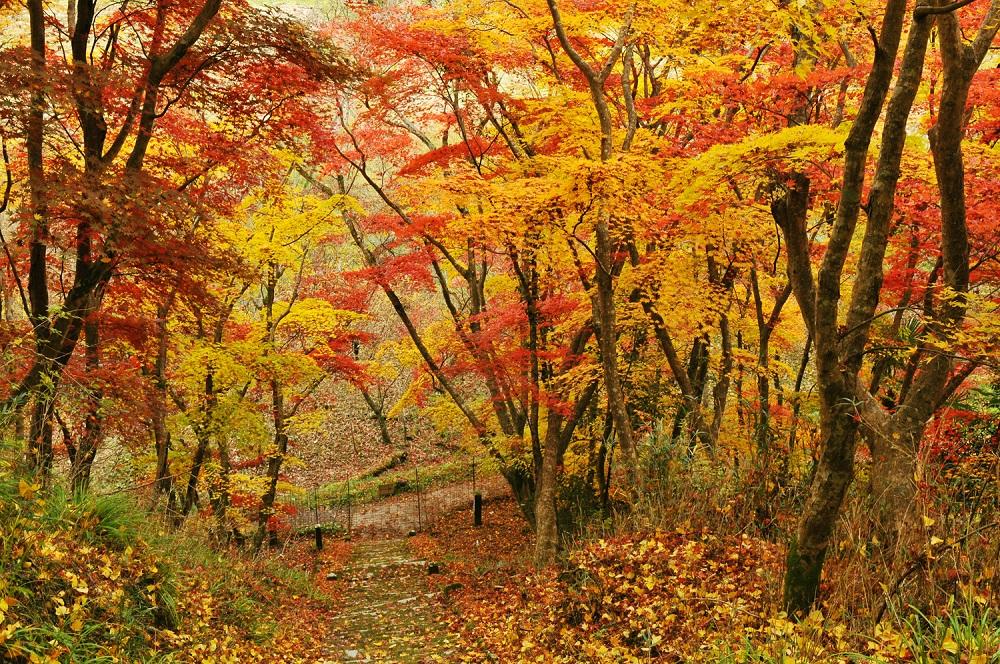
Among the many places famous for their autumn foliage in Yabakei, this is the hole-in-the-wall that is the slowest in terms of viewing the leaves. The official name of the shrine is Yasaka Shrine, but the torii gate reads "Sansho Shrine" and the flat plaque on the main building reads "Goryo Hachimangu Shrine. It was built in 1589 to comfort the spirits of 12 samurai women of Utsunomiya Chinbo, lord of the castle in Shiroi Township, Chikushi-gun, Buzen Province, who were killed by the Kuroda forces, lords of Nakatsu Castle. Villagers grafted saplings of five different colors onto a maple tree in the temporary hall of the shrine and planted them in the main hall, which is said to be the origin of the Goryo maple leaves. The maple and ginkgo trees on both sides of the moss-covered steps of the approach to the Goryo Shrine change color beautifully, and the contrast of red and yellow colors attracts visitors.
| Location | 2016 Oaza Tobara, Yabakei-cho, Nakatsu City, Oita Prefecture, Japan |
|---|---|
| phone | 0979-54-3111(General Affairs Division, Nakatsu City Yabakei Branch Office) |
| Access | 9 minutes from |
| supplementary information | Related URL:. Roadside Station Yabatopia |
Roadside Station Yabatopia
⑯ Keisekien
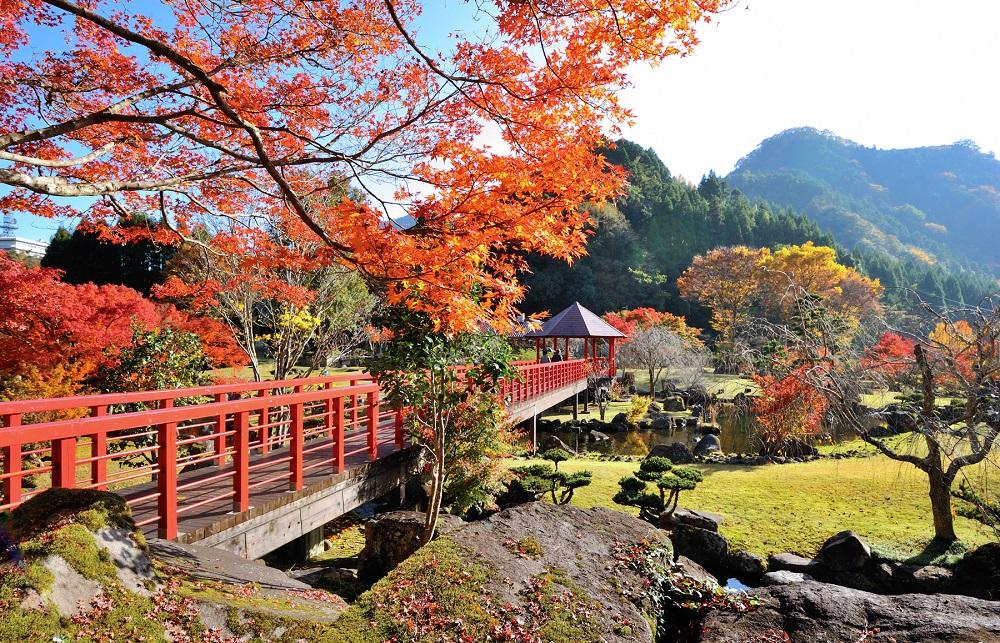
Another recommended spot for viewing autumn leaves from Roadside Station Yabatopia is Keiseki-en. This Japanese garden was built in 1987 to commemorate the completion of the Yabakei Dam. It covers an area of 20,000 square meters and uses tens of thousands of Yabakei rocks and water from the dam to recreate the Yabakei River. Some of the rocks are 6 meters high, evoking the dynamic nature of Yabakei. More than 31,000 trees of 100 species have been planted. The garden is illuminated during the cherry blossom and autumn foliage seasons, and there is a buckwheat noodle restaurant in the park. There is also a buckwheat noodle restaurant in the garden, serving charcoal buckwheat noodles and sweets.
| address (e.g. of house) | 2286-1 Oshima, Yabakei-cho, Nakatsu City, Oita Prefecture |
|---|---|
| phone | 0979-54-3111(Nakatsu City Yabakei Branch Office) buckwheat-noodle restaurant0979-54-2770 |
| Hours. | Open 24 hours Soba noodle shop 11:00-21:00 |
| regular closing day | None, buckwheat noodle shop is open on Wednesdays |
| Access | 14 minutes from |
| supplementary information | Related URL:. Roadside Station Yabatopia |
Roadside Station Yamakuni
View of ⑰Ifuku
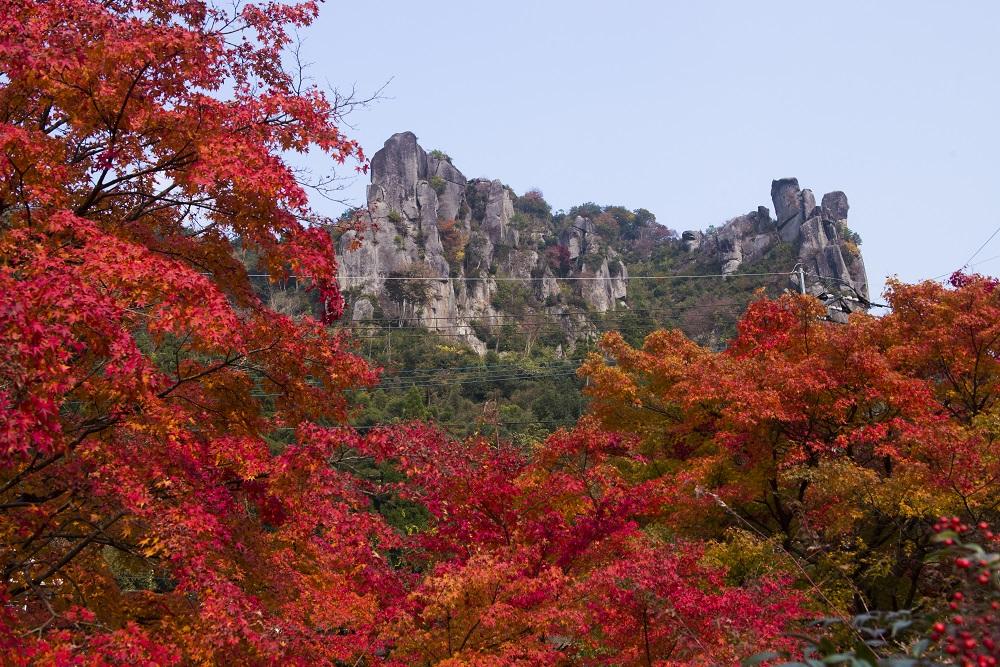
Yabakei is known as one of the three most beautiful red leaves in Japan. Ifuku-no-kei" (Ifuku basin is surrounded by rock peaks with sharp upright joints such as Shimizu-dani, Meiko-yama, Mikata-iwa-jo, and Hoko-iwa) is known for its harmony with the appearance of houses and rice paddies on the rock legs. The rocky peaks in this area are even more eye-catching because of the relatively smooth surfaces, which are less covered with ivy and creeper trees. During the fall foliage season, maple trees color the surrounding rocky peaks. The surrounding evergreens and green foliage add color to the sharply shaped rock formations and delight visitors, along with the maple trees planted along the extensive farm road by local residents.
| Location | Oaza Kanayoshi, Yabakei-cho, Nakatsu City, Oita Prefecture |
|---|---|
| phone | 0979-54-3111(Regional Development Division, Nakatsu City Yabakei Branch Office) |
| Access | 17 minutes from |
| supplementary information | Related URL:. Roadside Station Yamakuni |
Roadside Station Asaji
Yujaku Park
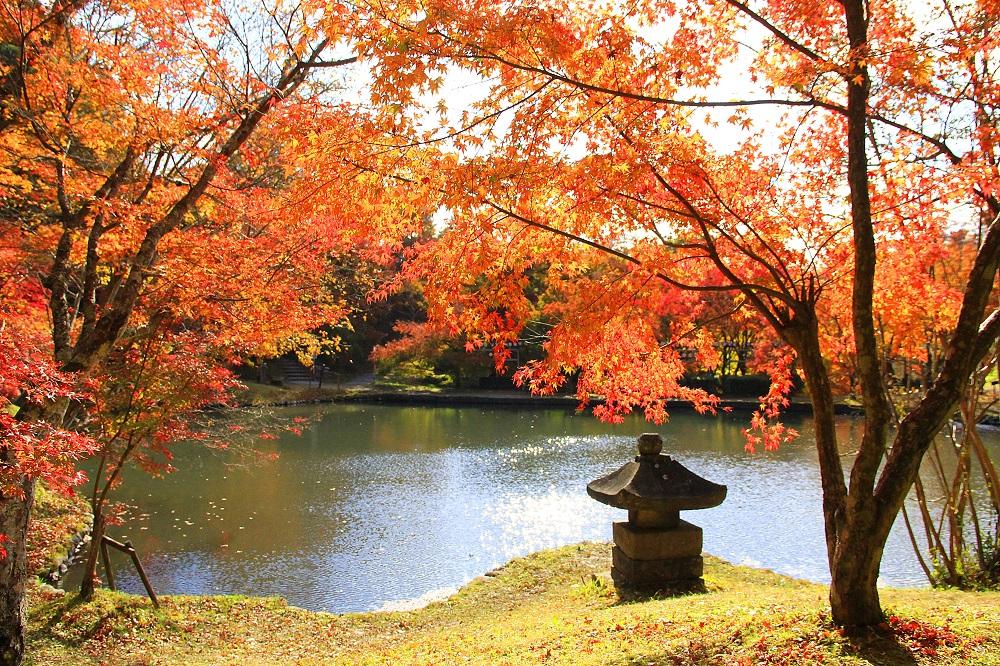
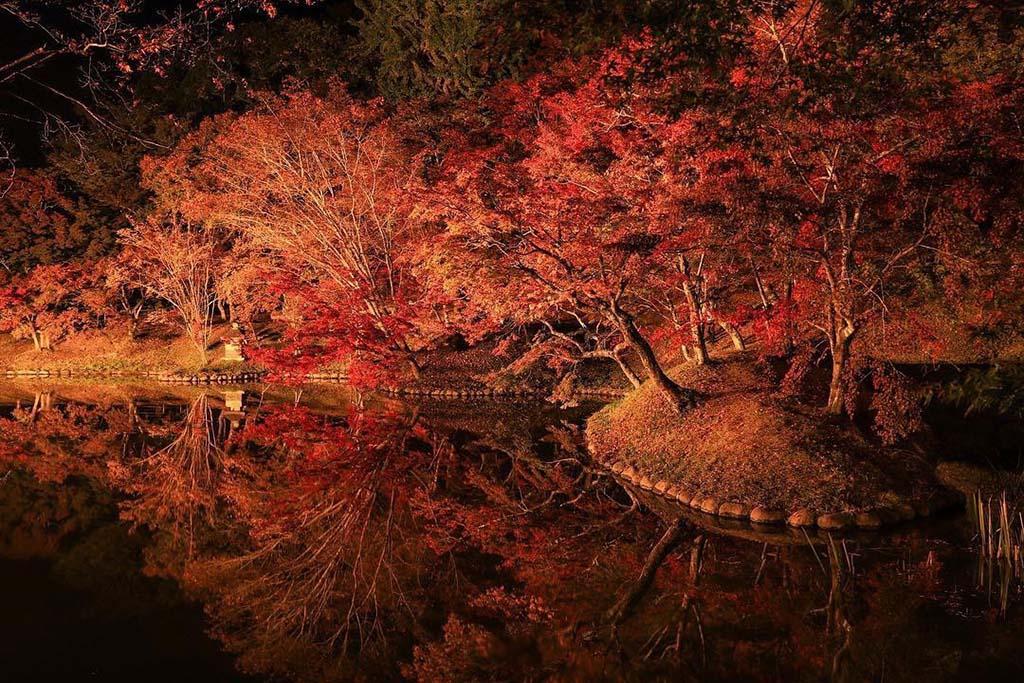
This is one of Oita Prefecture's most famous autumn foliage viewing spots. It is the site of a villa that was given to Nakagawa Heiemon Naganobu, a retainer of the Oka Domain, by the feudal lord of the Oka Domain in the Edo period. Located along the Oka Domain's route for the Edo period (1600-1868), Nakagawa often stopped by the villa on his way to and from work, and many writers and artists, including Tanomura Takeda and Rai Sanyo, also visited the villa. It is said to have served as the entrance to the Oka domain and as a place to receive visitors. More than 500 maple trees and other foliage trees are planted around the Shinji Pond, which is illuminated on weekends and national holidays during the autumn foliage season in November, attracting many visitors. (Subject to change due to prevention of the spread of corona infection)
| Location | 3914 Kamiotsuka, Asaji-cho, Bungo-Ono City, Oita Prefecture, Japan |
|---|---|
| phone | 0974-27-4215(Bungo-Ono-Sato Travel Public Corporation) |
| Access | 6 minutes from |
| supplementary information | Related URL:. Roadside Station Asaji |
Roadside Station Yuparu-no Jiri
Waterfalls (Sukimurando)


The Suki area is famous for its autumn foliage, and the official name of "Mamako Falls" is "Suki Falls. It is also called "Mamako Falls" because of a legend that a stepmother who hated her young stepson (mamako) tried to kill him by pushing him down the waterfall, and he himself fell in. The falls can be seen from the large suspension bridge at Sukimurando, a leisure facility built around Lake Ono, where visitors can enjoy the autumn colors of the mountains along with the falls in the fall. Visitors can also camp and BBQ while viewing the autumn leaves in the bungalows and other facilities in "Sukimurando. Hot spring facilities are also available for casual enjoyment.
| Location | 412-6 Sukishimoda, Kobayashi City, Miyazaki Prefecture |
|---|---|
| phone | 0984-48-2480 |
| Hours. | 9:00-18:00 Kajika no Yu 10:00-21:00 |
| regular closing day | Thursdays Kajika no Yu 2nd and 4th Thursdays |
| Access | 30 minutes from |
| supplementary information | Related URL:. Sukimurando official website Roadside Station Yuparu-no Jiri |
Roadside Station Kirishima
⑳霧島神宮(⑳霧島神宮)
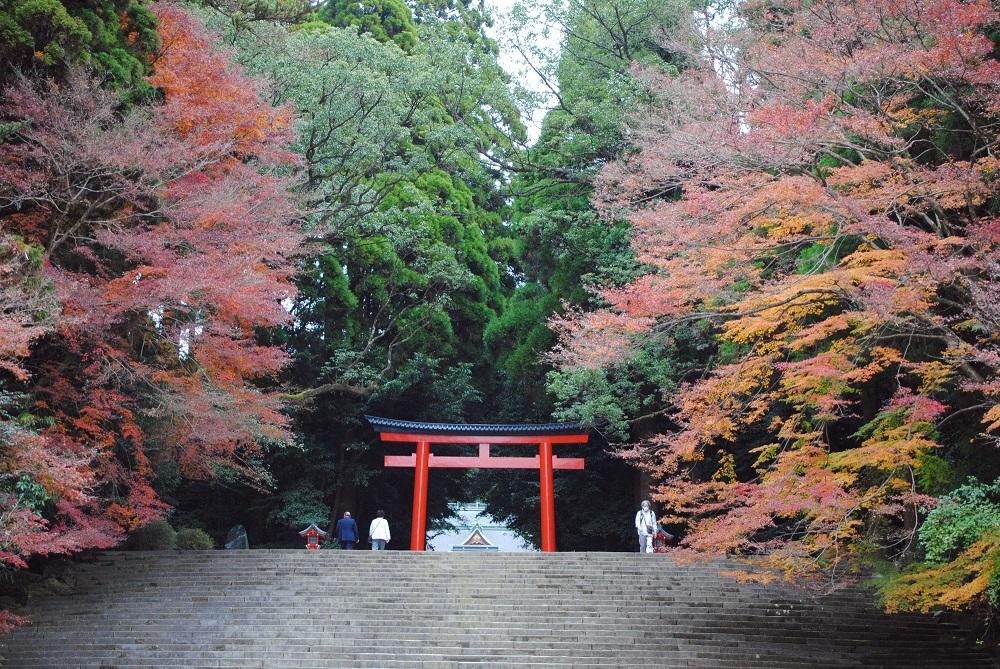
The shrine is dedicated to Ninigi no Mikoto, the hero of the myth of the descent of the grandchildren, and was founded in the 6th century. The present vermilion-lacquered shrine pavilions were donated by Shimazu Yoshitaka, feudal lord of Satsuma, in 1715 (Shoutoku 5) during the Edo period. The main shrine, the hall of offerings, and the hall of worship are national treasures, and the Kirishima Jingu Toryo and the imperial messenger hall are important cultural properties. The shrine is famous for its beautiful autumn foliage, with a fantastic scenery of maple, maple, and Japanese sumac trees stretching from the approach to the shrine grounds. The autumn leaves along the prefectural road in front of the Otorii gate and the maple trees along the approach to the temple behind the Nino-torii gate are especially vivid. This is a place where visitors can enjoy the sacred atmosphere away from the city.
| Location | 2608-5, Kirishima Taguchi, Kirishima City, Kagoshima Prefecture |
|---|---|
| phone | 0995-57-0001 |
| Hours. | 24 hours: Gift shop 8:00-17:30 |
| Access | 7 minutes from |
| supplementary information | Related URL:. Kirishima Jingu Shrine Official Website Roadside Station Kirishima |
Roadside Station Kawabe Yasuragi-no-Sato
21 Iwaya Park
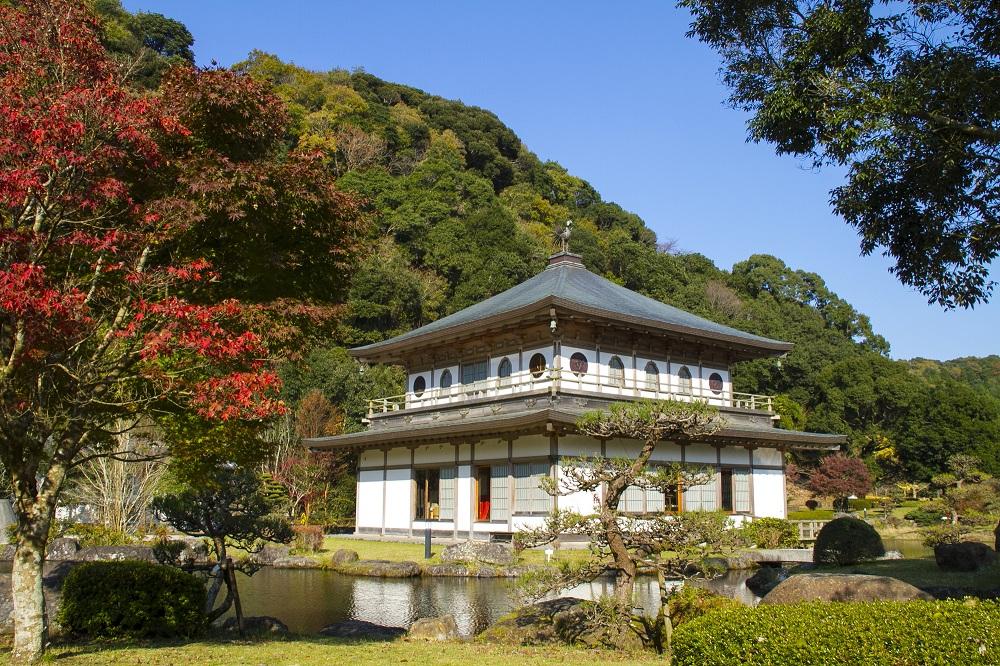
In the Kawabe area, there are many historic Buddhist sites. The largest of these is the Kiyomizu Cliff Buddha Group. The Kiyomizu Magaibutsu group of about 200 Buddha statues, 20 m high and 400 m wide, were carved along the Manose River in the Heian period (794-1185), and are of great historical and Buddhist value. It is designated as a historical site by the prefecture. Iwaya Park, located next to the Mogaibutsu group, is a park selected as one of the 100 best Sosui (drainage basins). In autumn, the Manose River running through the park reflects the colors of autumn leaves and gingko trees on the surface of the water. There is also a Japanese-style cafe "Sakura-no-Yakata," which is modeled after the Ginkakuji Temple, and a plaza, and if you stay at the campground, you can enjoy a BBQ while viewing the autumn leaves. The best time to view the leaves is from late November to early December.
| Location | Shimizu Yakushinoshita, Kawabe-cho, Minami-Kyushu City, Kagoshima Prefecture |
|---|---|
| phone | 0993-83-4433(Minami-Kyushu City) |
| Access | 6 minutes from |
| supplementary information | Related URL:. Iwaya Park Campsite Official Website Roadside Station Kawabe Yasuragi-no-Sato |
We introduced recommended autumn foliage spots that can be easily reached from the roadside station.
We hope you will find it useful for your fall trip.

